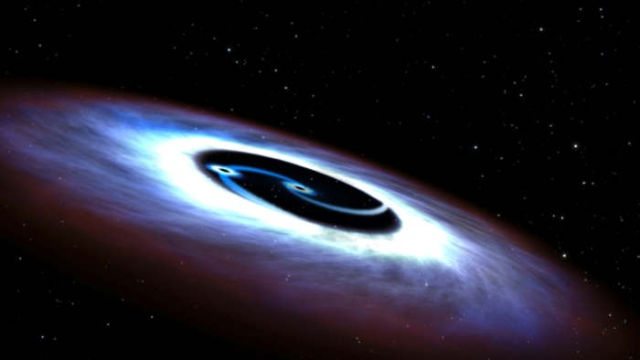The most significant scientific discovery of the decade has just been announced: Einstein’s gravitational wave theory proven by the sound of two black holes colliding.
It took 1,000 scientists from 16 countries, 2 miles-long tubes and 25 years of work, to the Laser Interferometer Gravitational-Wave Observatory (LIGO), the project that detected the gravitational wave signal, to announce that they have found gravitational waves.
Above: An illustration of a binary black hole (Markarian 231) 1.3 billion light years from Earth. Their collision generated the first gravitational waves we’ve ever detected. Image: NASA
What the first LIGO detection would look like up close:
Advanced LIGO saw gravitational waves from two black holes that merged over a billion light years from Earth. This computer simulation shows (in slow motion) what this would look like up close. If this movie were played back in real time, it would last for about one third of a second.
In this movie, the black holes are near us, in front of a sky filled with stars and gas and dust. The black regions are the shadows of the two black holes: no light would reach us from these areas. Light from each star or bit of gas or dust travels to our eyes along paths (light rays) that are greatly bent by the holes’ gravity and by their warped spacetime. This is called “gravitational lensing.” Because of this gravitational lensing, the pattern of stellar and gas/dust images changes in fascinating ways, as the black holes orbit each other, then collide and merge.
The ring around the black holes, known as an “Einstein ring,” arises from all the stars in a small region directly behind the holes; gravitational lensing smears their images into the shape of a ring.
As LIGO director Dave Reitze summed up at the beginning of this afternoon’s press conference, “We did it!”
“It’s the first time the universe has spoken to us through gravitational waves,” Reitze said. “Up until now we’ve been deaf… but now we are able to hear them.”
via universetoday
source LIGO






Leave A Comment